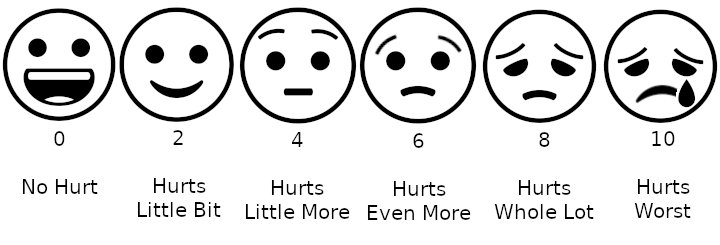The California Workers’ Compensation System employs various scales and tests to assist with Injured Workers’ evaluation and treatment. One of these tests is the Pain, Enjoyment and General Activity Scale (PEG.)
This article will discuss the PEG Scale and how it can be used within the workers’ compensation system.
Why Are Scales Used in General?
Scales can be used for many reasons. Scales are generally self-reporting. Thus, all that is needed to administer one is a pen, a clipboard, and the questionnaire. Thus, they are a cheap, quick and easy way to extract information from Injured Workers. Scales can show that an injured Worker is credible. They can show that an Injured Worker is malingering or exaggerating. Scales can show a cry for help.
One way a scale can be used Is by comparing them to prior scales. When compared, it can show a patient’s assessment of medical improvement or lack thereof.
Scales are employed by medical examiners, treaters and utilization review evaluators to assess the Injured Workers’ disability status, permanent disability, and whether forms of treatment are indicated and should be approved.
In an article discussing PEG, it was noted that “[t]he competing demands of primary care, in which visits are short and pain is only one of several problems warranting attention, make efficiency of assessment a paramount concern. A balance must be found between feasibility and key characteristics such as reliability, validity, and responsiveness.” Krebs EE, Lorenz KA, Bair MJ, et al. Development and initial validation of the PEG, a three-item scale assessing pain intensity and interference. J Gen Intern Med. 2009;24(6):733-738. doi:10.1007/s11606-009-0981-1
What Is PEG Scale’s Complete Name? How Does It Relate to Workers’ Compensation?
The PEG Scale’s full name is the Pain, Enjoyment of Life and General Activity Scale.
California Workers’ Compensation Law employs the AMA Guides to assess permanent impairment. In the assessment of permanent impairment, Pain is a factor that is considered. Also, Activities of Daily Living is also a factor.
In sum, the scale overlaps some of these issues.
What Does the PEG Scale Consist Of?
The PEG Scale consists of three questions that are rated from 0 to 10.
What is the Pain Scale’s First Question?
The first question is “what number best describes your pain on average in the past week?”
How is the First Scale Question Answered?
The question is answered in a 0 to 10 scale. 0 being “no pain” to 10 being “pain as bad as you can imagine.”
What is the Second Question of the Pain Scale?
The second question is “what number best describes how, during the past week, pain has interfered with your enjoyment of life?”
How is the Second Question Answered?
The question is answered in a 0 to 10 scale. 0 being “does not interfere” to 10 being “completely interferes.”
What is the Third Question on the Pain Scale?
The third question is “what number best describes how, during the past week, pain has interfered with your general activity?”
How is the Third Question Answered?
The question is answered in a 0 to 10 scale. 0 being “does not interfere” to 10, “completely interferes.”
How is the PEG Scale Scored?
The scale is scored by adding up all three numbers and dividing by 3.
What Is the PEG Scale Specifically Used For?
“This scale can be administered in person at a clinic or hospital, answered via phone interview or personally completed at home. It is a flexible scale that can be used for many scenarios. For example, the PEG scale is often used to determine if a medication is effective; using it for this purpose helps determine an individual’s level of functioning while taking medication(s). Individuals who show a stable level of functioning, with no other factors that suggest a dosage adjustment, a medication taper or a medication change is needed, would then continue on their medication regime.” Painscale.com
Is There Any Advice to An Injured Worker?
Yes. These scales will be used possibly for two purposes: first, to evaluate your credibility, and second, to evaluate your improvement with respect to prescription medications and treatment.
Thus, it is best to make your best efforts to accurately answer them.
What If I Need Advice?
If you would like a free consultation regarding workers’ compensation, please contact the Law Offices of Edward J. Singer, a Professional Law Corporation. We have been helping people in Central and Southern California deal with their workers’ compensation cases for 27 years. Contact us today for more information.


